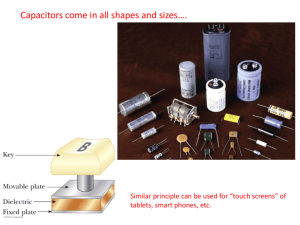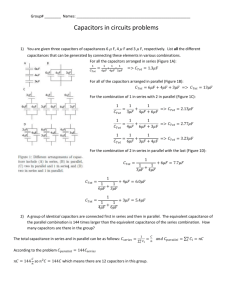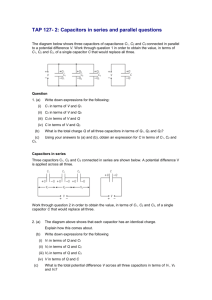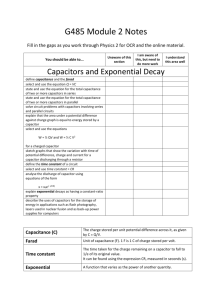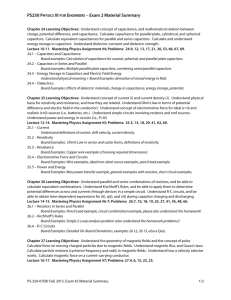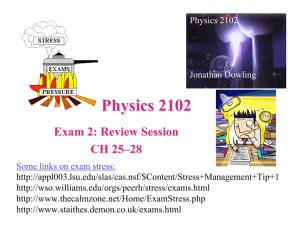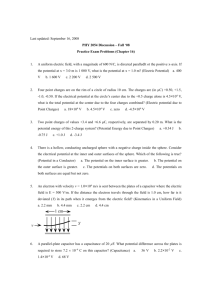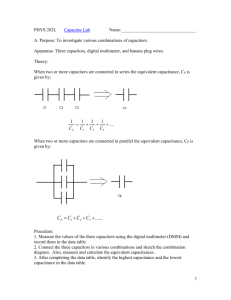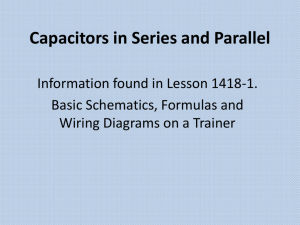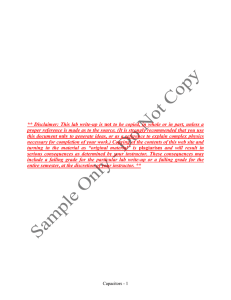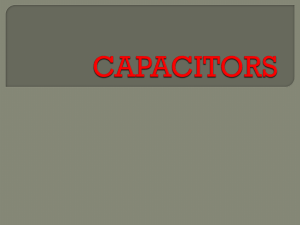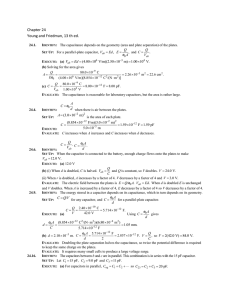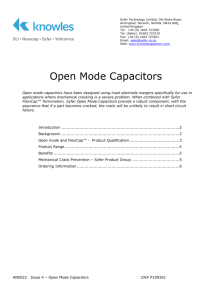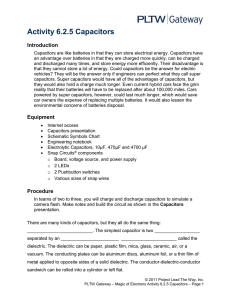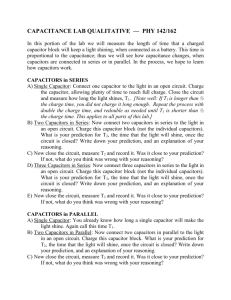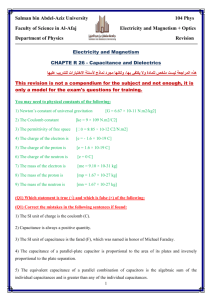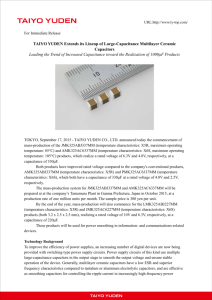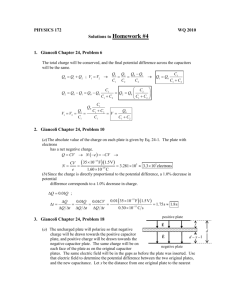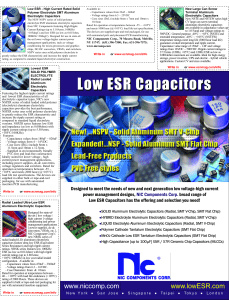Episode 124: Preparation for capacitors topic
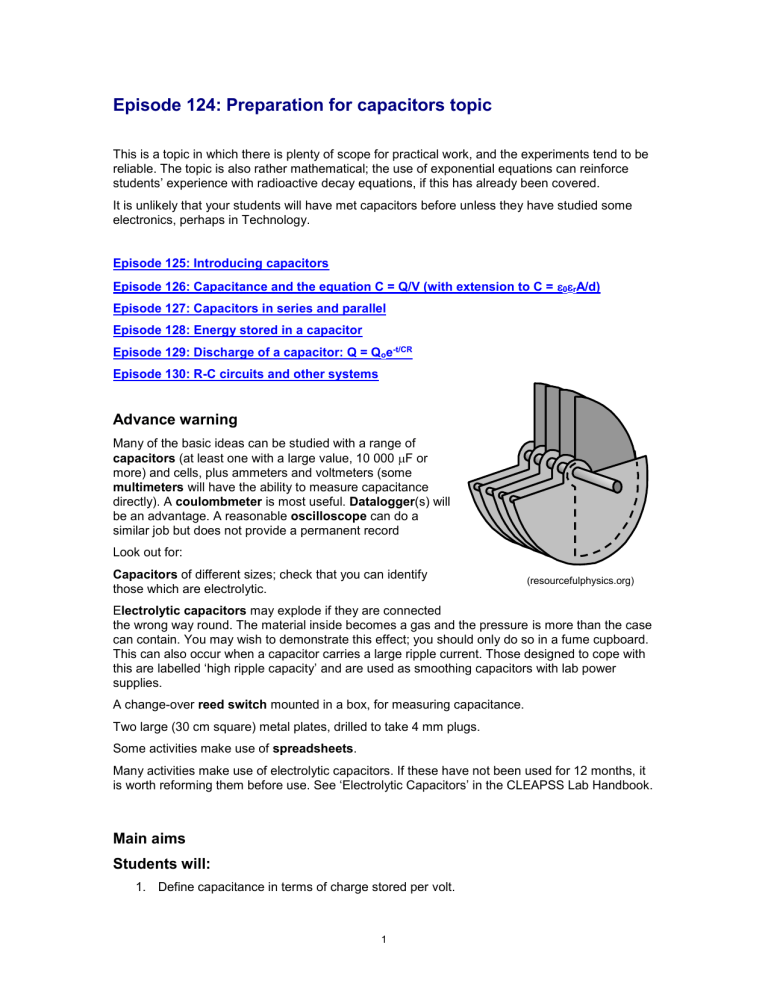
Episode 124: Preparation for capacitors topic
This is a topic in which there is plenty of scope for practical work, and the experiments tend to be reliable. The topic is also rather mathematical; the use of exponential equations can reinforce students’ experience with radioactive decay equations, if this has already been covered.
It is unlikely that your students will have met capacitors before unless they have studied some electronics, perhaps in Technology.
Episode 125: Introducing capacitors
Episode 126: Capacitance and the equation C = Q/V (with extension to C =
0
r
A/d)
Episode 127: Capacitors in series and parallel
Episode 128: Energy stored in a capacitor
Episode 129: Discharge of a capacitor: Q = Q o e -t/CR
Episode 130: R-C circuits and other systems
Advance warning
Many of the basic ideas can be studied with a range of capacitors (at least one with a large value, 10 000
F or more) and cells, plus ammeters and voltmeters (some multimeters will have the ability to measure capacitance directly). A coulombmeter is most useful. Datalogger (s) will be an advantage. A reasonable oscilloscope can do a similar job but does not provide a permanent record
Look out for:
Capacitors of different sizes; check that you can identify those which are electrolytic.
(resourcefulphysics.org)
E lectrolytic capacitors may explode if they are connected the wrong way round. The material inside becomes a gas and the pressure is more than the case can contain. You may wish to demonstrate this effect; you should only do so in a fume cupboard.
This can also occur when a capacitor carries a large ripple current. Those designed to cope with this are labelled ‘high ripple capacity’ and are used as smoothing capacitors with lab power supplies.
A change-over reed switch mounted in a box, for measuring capacitance.
Two large (30 cm square) metal plates, drilled to take 4 mm plugs.
Some activities make use of spreadsheets .
Many activities make use of electrolytic capacitors. If these have not been used for 12 months, it is worth reforming them before use. See ‘Electrolytic Capacitors’ in the CLEAPSS Lab Handbook.
Main aims
Students will:
1. Define capacitance in terms of charge stored per volt.
1
2. Calculate values of charge and energy stored.
3. Calculate values of capacitances connected in series and parallel.
4. Interpret exponential and logarithmic graphs for capacitor discharge.
5. Relate their understanding to analogous phenomena, including springs and radioactive decay.
Prior knowledge
The topic draws on what students already know about simple dc circuits. There may be a need to remind students about charge while it is possible that ideas about (uniform) electric fields can be reinforced.
(If your specification introduces the formula for calculating capacitance, then students will have to use
0
, the permittivity of free space, so previous work with electric fields is more important in this case.)
Where this leads
The exponential equations for capacitor discharge are similar to those for radioactive decay (and for damped SHM). Depending on the order in which you are tackling these topics, you can either refer back to previous use of exponentials, or refer ahead to future work. It is helpful to students to fe el that they are getting ‘two for the price of one’, particularly if they find these mathematical ideas tricky.
2


